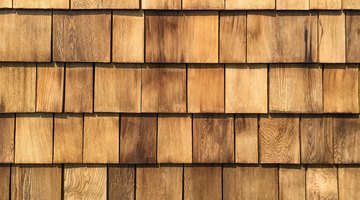Why Does Cedar Wood Pop?
The sound of wood burning can enhance the experience of a fire, whether you’re enjoying s'mores around a campfire or relaxing by a wood fire indoors on a cold night. Some types of wood, including cedar, pop more than others when they burn. It’s all to do with the moisture and resin levels inside the wood and how these effect the chemical reaction with the oxygen in the atmosphere during the burning process.

Wood Burning Process
In order for anything to burn, it requires a source of fuel. This is where wood comes in; when you heat it to its ignition temperature (around 300 degrees Fahrenheit or 149 degrees Celsius) its cellulose material begins to decompose. This turns the solid pieces of wood into smoke (a volatile gas), char (carbon) and ash (an un-burnable material). When the smoke reaches a temperature of around 500 degrees Fahrenheit (260 degrees Celsius), its molecules separate and mix with oxygen to create other products, including water and carbon dioxide. At the same time, the carbon in the char mixes with oxygen, but at a much slower rate than the smoke does.
Inside wood are tiny pockets of water and sap, which heat as the wood burns. They reach a boiling point then vaporize into steam. The steam tries to escape from the pockets inside the wood, pressing against the surrounding wood. At some point, the steam breaks through the wood and results in a snapping, crackling and popping sound. This is the sound of the wood splitting and releasing steam into the fire.
What Happens When Cedar Burns
All types of wood make sounds when they burn, but cedar wood is particularly noisy because it contains large pockets of moisture as well as lots of resin. Resin is an oily, highly-flammable substance, so it creates more cracks and pops when the wood burns. When resin bits catch fire, they explode and throw wood debris and hot sparks (embers) out of the fireplace. Eastern cedar and Western red cedar tend to spark and pop more than white cedar. Other softwoods, like hemlock, spruce and pine, also contain high levels of moisture and resin.
Safety Tips for Burning Cedar
When choosing which wood to burn at home, you don't have to rule out cedar just because it pops more than other woods. Dry cedar woods outdoors for at least one year to reduce its moisture content and reduce popping and flying sparks. Mix cedar wood with hardwood, or use it only as kindling. (Cedar actually makes a great kindling wood because its oils makes it a more volatile fuel.) Use a fire safety screen to prevent sparks jumping out of the fireplace onto carpets, drapes, furnishings and people. A fire-retardant hearth rug also helps to trap escaping embers.
References
Writer Bio
Claire has been writing and editing for 18 years. She has written for many digital home publications, including Apartment Therapy, Good Housekeeping, Buzzfeed and Architectural Digest.
More Articles



